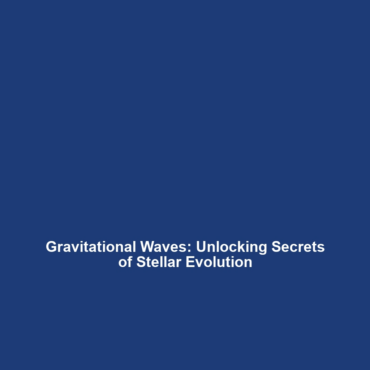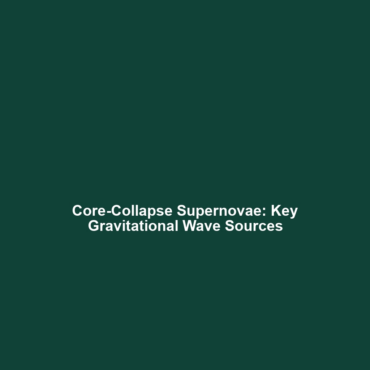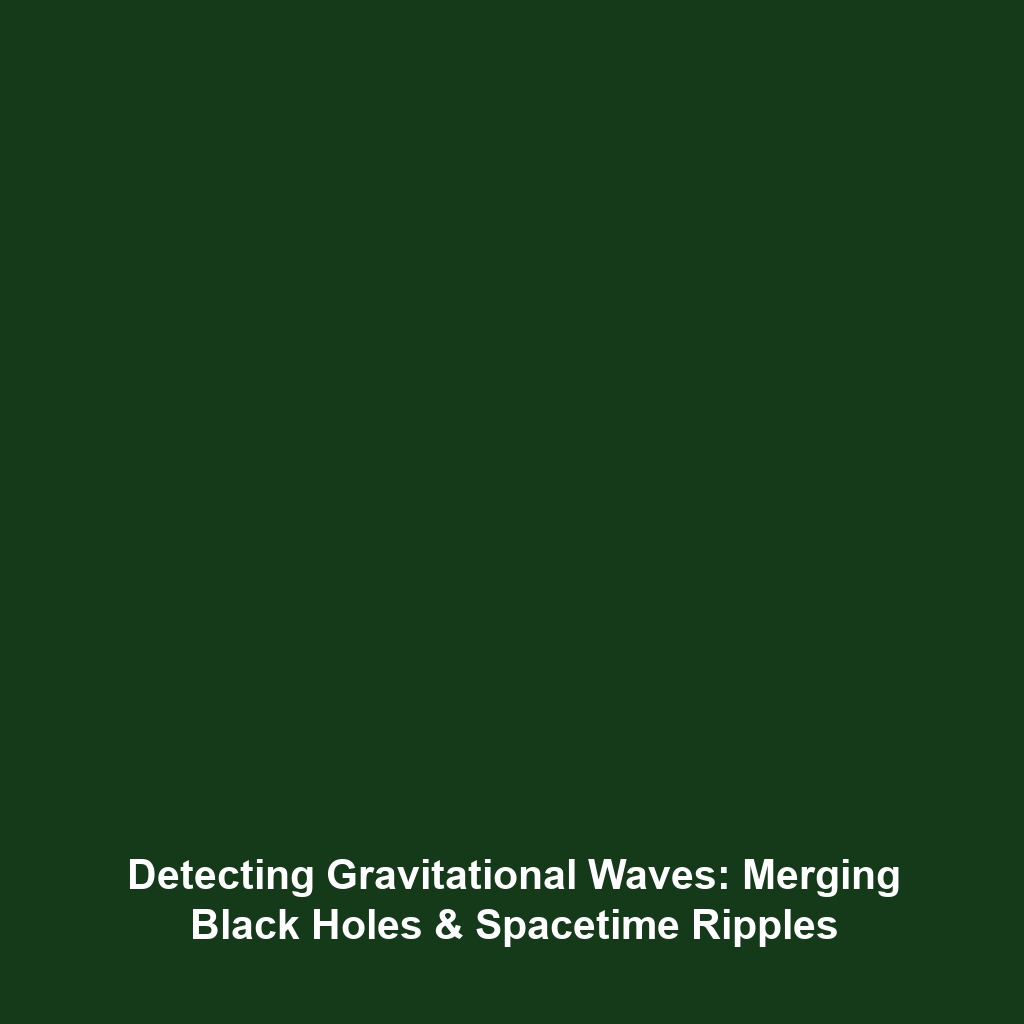Gravitational Waves and Stellar Evolution: What Waves Reveal About Star Life Cycles
Introduction
Gravitational waves, ripples in spacetime caused by the acceleration of massive objects, have opened a new frontier in astrophysics. By studying these waves, scientists can glean insights into stellar evolution, unraveling the lifecycle of stars from formation to their explosive ends as supernovae or black holes. This interdisciplinary approach illuminates the significance of gravitational waves in understanding how stars change over time and the fundamental processes that govern their existence. Understanding how gravitational waves shape our knowledge of stellar life cycles is pivotal for advancing both astrophysics and our comprehension of the universe.
Key Concepts
Gravitational Waves
Gravitational waves are generated by massive celestial events, such as neutron star mergers and black hole collisions. When these astrophysical catastrophes occur, they produce ripples that travel across the universe, allowing researchers to identify the events that led to the waves.
Stellar Evolution
Stellar evolution encompasses the processes a star undergoes during its existence. From its birth in nebulae through various stages—main sequence, red giant, and potentially to a supernova—understanding these stages helps scientists interpret gravitational waves that arise from particular events in this lifecycle.
Applications and Real-World Uses
The study of gravitational waves and stellar evolution has practical implications, both for theoretical astrophysics and for technology:
- Detection Technology: Advanced laser interferometers, such as LIGO and Virgo, are used to detect gravitational waves, enhancing our understanding of cosmic events.
- Astronomical Insights: Gravitational wave observations provide crucial data about neutron star and black hole collisions, revealing properties about their masses and spins.
- Multi-Messenger Astronomy: Combining gravitational wave data with electromagnetic observations allows for comprehensive studies of astronomical phenomena, deepening insights into the life cycles of stars.
Current Challenges
Despite significant advancements, challenges remain in studying gravitational waves and their relation to stellar evolution:
- Detection Sensitivity: Current technology faces limitations in detecting weaker signals from distant cosmic events.
- Data Interpretation: The complex nature of gravitational wave data analysis requires advanced algorithms and models.
- Funding and Resources: Continued development of detection facilities necessitates significant investment and commitment.
Future Research and Innovations
Future research in the realm of gravitational waves and stellar evolution promises exciting innovations:
- Next-Gen Detectors: Upcoming projects, such as LISA (Laser Interferometer Space Antenna), aim to detect lower-frequency gravitational waves, enhancing our understanding of stellar evolution.
- Machine Learning: Implementing AI and machine learning in data analysis could significantly improve the detection and interpretation of gravitational wave signals.
- International Collaborations: Global partnerships among researchers will foster more comprehensive studies and data sharing to tackle existing challenges.
Conclusion
In summary, gravitational waves serve as a powerful tool for understanding stellar evolution, revealing significant insights into the lifecycle of stars. The ongoing exploration of these waves has implications not just for astrophysics but also for technological advancements and multi-messenger astronomy. As researchers continue to innovate and face challenges in this field, the future holds great promise for uncovering further mysteries of our universe. For more in-depth knowledge, explore our related articles on Astrophysics Innovations and Stellar Lifecycle Analysis.



